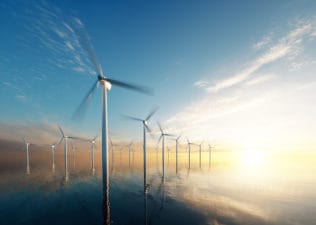The Canada Emergency Response Benefit (CERB) is the main financial lifeline for Canadians during COVID-19. Paying $1,000 every two weeks, it’s a sizable income supplement for those who are out of work. In many cases, the CERB pays more than EI does, and it’s typically approved faster with less “red tape.”
Given these facts, it’s not surprising that the CERB has become a popular program. With fast approval times and a generous payment amount, it’s received millions of applications.
Recently, I wrote that the CERB had received eight million unique applicants and paid out $40.33 billion. Since then, the number of applicants has risen to 8.3 million, and the payouts to $42.6 billion.
That’s a lot of money paid out to out-of-work Canadians. And the CRA intends to get much of it back. Under program rules, the CERB is fully taxable. It’s taxed the same way that income from a job would be, and if your employment income is high in 2020, your tax rate on CERB money will be, too.
The CERB was introduced in March and is set to expire on October 3. Most CERB recipients will have employment income on top of their CERB cheques. If you’re one of them, you’ll likely have to pay sizable taxes on your CERB. Here’s how to calculate how much you’ll owe.
Step one: Calculate your income
The first thing you need to do to calculate your CERB taxes is to estimate your income for 2020. If you receive the same pay every month, it will be your pay for all the months you worked plus the CERB money received when you were out of work. Add the two together, and you’ve got your likely 2020 pre-tax income.
If your income varies month to month (e.g., you work in sales or are self-employed), your estimate will be less precise. In that case, you might want to put 50% of your CERB away for taxes just to be safe.
Step two: Find your marginal tax rate
Once you know your income level, you need to find your marginal tax rate — That is, the combined federal/provincial tax rate in the highest tax bracket you’re in. For example, if you earn $250,000, you’ll pay 33% in federal taxes on the amount over $214,000, plus provincial taxes. The two together gives you your marginal tax rate. That’s the rate you’ll pay on the CERB.
How to minimize your taxes
If you want to minimize the taxes you pay on the CERB, you have several options available. One of the best is to hold your investments in a TFSA. Like the CERB, investments are taxable, and they may push your marginal tax rate higher. Unlike the CERB, they can be tax sheltered.
Consider the case of a CERB recipient holding a $20,ooo position in the iShares S&P/TSX 60 Index Fund (TSX:XIU) in a TFSA. At the current yield, that would pay about $600 a year. In a TFSA, no taxes would be paid on that income, nor would it make the CERB recipient’s income higher.
Outside a TFSA, it would be a different story. First, taxes would have to be paid on the $600 in dividends themselves. Second, the dividends could push the investor into a higher tax bracket, driving up their marginal tax rate. In that situation, the investor would have to more taxes on CERB than they would otherwise. It’s always better to hold ETFs like XIU in a TFSA than in a taxable environment — doubly so if you’re receiving the CERB.








